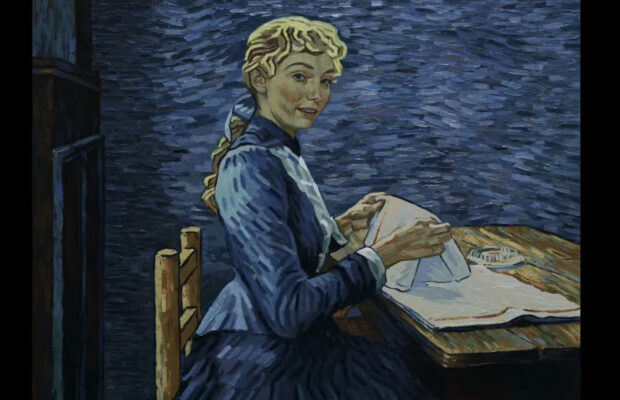Loving Vincent showcases creativity

It is more common than ever for people to complain about the lack of creativity in the movie industry. The incessant grumbling about how no one can make an “original movie” is in itself a monologue that is overused, although it is not unwarranted; the majority of 21st century movies (especially rom coms, action and horror movies) not only have the same basic storyline, but also basically look the same. If you watched one and switched it out for another halfway through, you’d barely recognize a difference. Although it seems as though human existence has gone through every possible movie idea at least once, the movie “Loving Vincent” proves that there is much more potential we have yet to unlock.
“Loving Vincent,” quite literally, is a work of art. The movie was independently released in 2017 and can now be found on Hulu. It features over 65,000 frames of oil paintings, painted by over 100 painters on over 1,000 canvases digitally sewn together and voiced over to create its own class of “animated” film. The scenes were first shot with a normal camera, then sent to the artists, who broke it up into the frames and used individual canvases for each scene. The movie is, as its website claims, the world’s first ever fully painted film. The filmmakers saw it as essential to create the movie in this way, citing that “you cannot truly tell Vincent’s story without his paintings, so we needed to bring his paintings to life.”
The movie is an astounding, visual masterpiece. Words can barely describe how truly remarkable the movie’s artistry is. Even the trailer does not do it justice, so I implore you to check it out. Plot-wise, the movie uses an interesting perspective, albeit a little slow paced. The son of a postman, Armand, must hand deliver a letter to Vincent Van Gogh’s brother and simultaneously documents the little known intricacies involving Van Gogh’s death. Although it has been officially ruled a suicide, the movie explores the minute details through Armand’s eyes that don’t seem to add up.
Ironically, when discussing the concept of creativity, it is nearly impossible to avoid bringing up Van Gogh. Van Gogh’s legacy as a creative, unorthodox artist can serve as inspiration in any artistic endeavor, including filmmaking. His surpassing of the artistic boundaries during his time truly allows “Loving Vincent” to be the perfect representation of the creative potential the movie industry still has.
“Loving Vincent” undoubtedly dismantles the notion that the movie industry has run out of ideas. The movie has broken boundaries, and despite its award nominations at a variety of film festivals, deserves much more recognition than it has. The independent group that created “Loving Vincent” constructed a film of mind-blowing creativity for a budget of 5.5 million dollars. In contrast, a typical blockbuster movie has a budget of about 65 million dollars on average, not to mention a wider variety of resources.
Creativity is not dead. Movie studios and its directors can do better, instead of rotating through the same five movie tropes. “Loving Vincent” is proof of this, and again, there is no one better than Van Gogh to express the importance of creativity: “Normality is a paved road: It’s comfortable to walk, but no flowers grow on it.”



